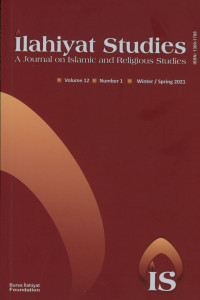Method, Structure, and Development in al-Fārābī’s Cosmology, by Damien Janos
First paragraph: The present book is Janos’ revised PhD thesis and consists of four chapters. The first chapter serves as an introduction and surveys in three sections followed by a fourth one reserved for conclusions (pp. 111-113) broad themes, namely (1) “cosmology, the sciences, and the scientific method” (pp. 11-43), (2) “astronomy and its place in the philosophical curriculum” (pp. 43-84), (3) “demonstration and analogy: a tension in al-Fārābī’s method” (pp. 84-111). The second chapter, titled “the architecture of the heavens: intellects, souls, and orbs,” treats in four sections followed by conclusions (pp. 201-203) (1) “the celestial bodies” (pp. 115-142), (2) “the separate intellects” (pp. 142-180), (3) “the first (al-awwal)” (pp. 180-189), and (4) “unity and multiplicity” (pp. 190-201). The third chapter under the header “matter and creation: a shift in paradigms?” follows the same basic structure as the two preceding ones and the subsequent chapter. It discusses (1) “the nature of celestial matter” (pp. 203-235), (2) “the origin of matter: from creationism to eternal causation” (pp. 235-311), (3) “strengthening the developmentalist hypothesis” (pp. 312-325) and closes with (4) “conclusion(s)” (pp. 325-332). Chapter 4 on “the aporia of celestial motion” studies (1) “the various motions of the heavenly bodies” (pp. 333-339), (2) “the causes of celestial motion” (pp. 339-355), and (3) “the problem of the particular motions of the planets” (pp. 355-376), wrapped up by (4) “conclusion(s)” (pp. 376-377). After these four chapters follows a brief presentation (4 pp.) of general conclusions, two appendices (pp. 383-402), the bibliography and an index.
Method, Structure, and Development in al-Fārābī’s Cosmology, by Damien Janos
First paragraph: The present book is Janos’ revised PhD thesis and consists of four chapters. The first chapter serves as an introduction and surveys in three sections followed by a fourth one reserved for conclusions (pp. 111-113) broad themes, namely (1) “cosmology, the sciences, and the scientific method” (pp. 11-43), (2) “astronomy and its place in the philosophical curriculum” (pp. 43-84), (3) “demonstration and analogy: a tension in al-Fārābī’s method” (pp. 84-111). The second chapter, titled “the architecture of the heavens: intellects, souls, and orbs,” treats in four sections followed by conclusions (pp. 201-203) (1) “the celestial bodies” (pp. 115-142), (2) “the separate intellects” (pp. 142-180), (3) “the first (al-awwal)” (pp. 180-189), and (4) “unity and multiplicity” (pp. 190-201). The third chapter under the header “matter and creation: a shift in paradigms?” follows the same basic structure as the two preceding ones and the subsequent chapter. It discusses (1) “the nature of celestial matter” (pp. 203-235), (2) “the origin of matter: from creationism to eternal causation” (pp. 235-311), (3) “strengthening the developmentalist hypothesis” (pp. 312-325) and closes with (4) “conclusion(s)” (pp. 325-332). Chapter 4 on “the aporia of celestial motion” studies (1) “the various motions of the heavenly bodies” (pp. 333-339), (2) “the causes of celestial motion” (pp. 339-355), and (3) “the problem of the particular motions of the planets” (pp. 355-376), wrapped up by (4) “conclusion(s)” (pp. 376-377). After these four chapters follows a brief presentation (4 pp.) of general conclusions, two appendices (pp. 383-402), the bibliography and an index.
